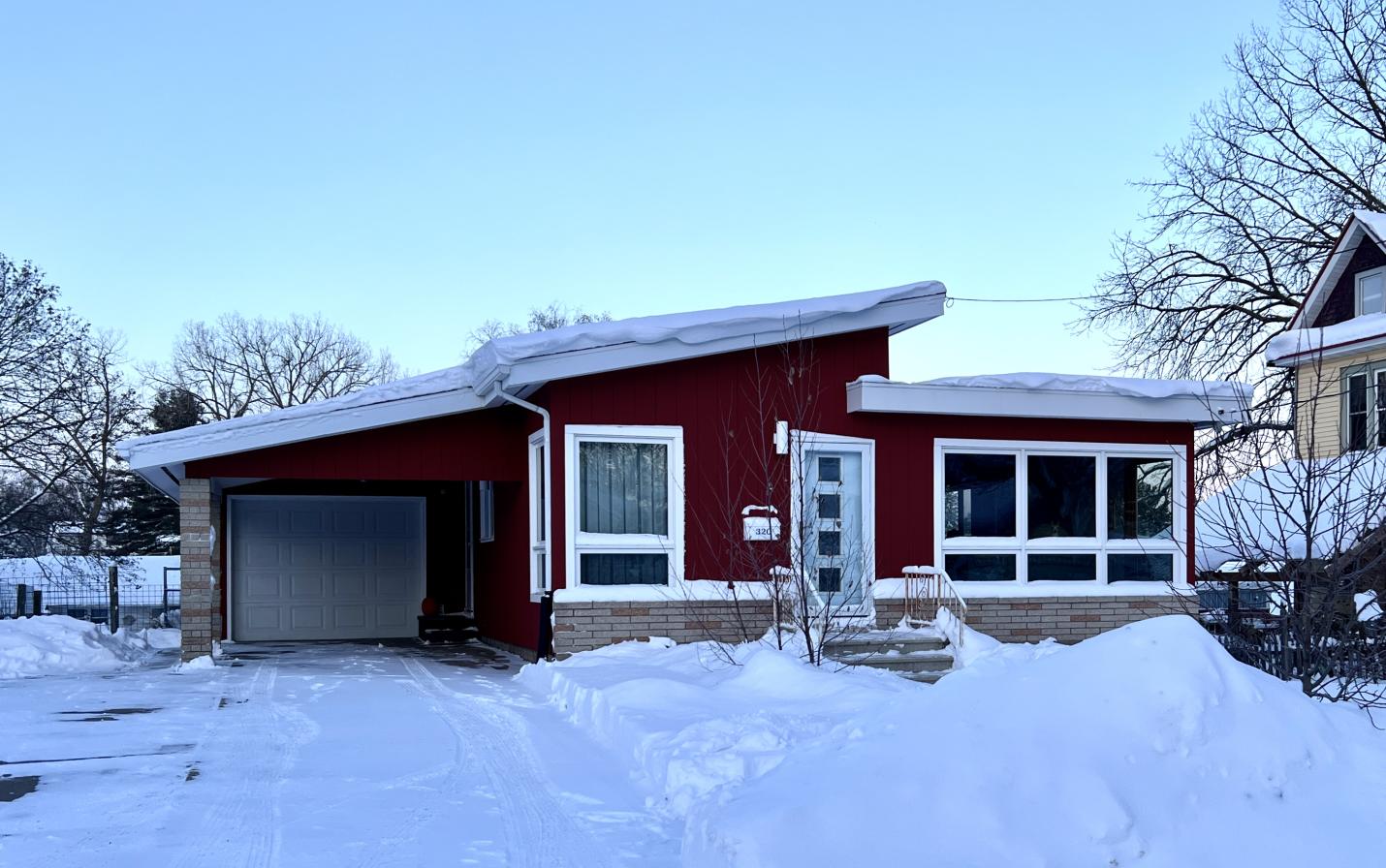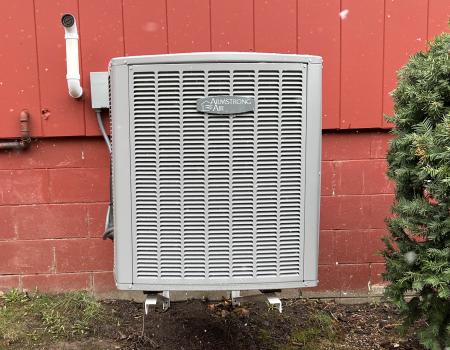
In the face of a worldwide climate crisis, I wondered how I could reduce my own footprint on the planet. I wondered about the possibility of solar panels on my roof or when I might be able to afford an electric car. Then my house taught me an important lesson about prioritizing my energy needs in Wisconsin:
- solar panels are optional
- electric cars are optional
- replacing a dead furnace in winter is NOT optional!
When my 20-year-old gas furnace died on a mild November day, I realized I was lucky. Winter had not yet set in, and there was no danger of pipes freezing.
I felt even more fortunate when I had a new dual-fuel heating system installed in my house by the end of the same week. By dual-fuel I mean that my new system has two heating types built into one. A dual-fuel heating system, also known as a hybrid system, uses electricity to run a heat pump when my house needs heat during most of the winter. Only on extra chilly days and nights does the gas furnace take over when the heat pump might not be able to keep up.
Heat pumps have been used in mild climates for many decades. With improved technology by manufacturers and increased interest in electrification, heat pumps are now being installed in all climates, including the Midwest.
Within 24 hours of asking friends to recommend heating contractors, I had calls out to 4 companies and one had already visited my home to assess the situation. Within 48 hours, I had a written proposal and installation plan from the first company and two more companies were trying to schedule visits. The first proposal included information about warranties and rebates plus the offer to fill out the rebate forms for me. My choice became obvious, based on cost, price, and service.
I could have replaced only my gas furnace, but that would have provided no reduction in my fossil fuel use, and it was just a matter of time before my 20-year-old central air-conditioning unit would also need replacement. I opted for a complete dual-fuel package that included a new gas furnace for the coldest winter months, a single heat pump (an electric-powered air heat-exchange system that heats in chilly weather and cools in hot weather), and a thermostat that allows me all kinds of options for scheduling and monitoring the system. And it all runs through the existing ducts in my 60 year-old home. With a $1,300 rebate from Wisconsin, a $1,000 rebate from my electric utility, and a $2,700 tax credit, my total investment came out to be $7,500. That’s a big-ticket item for a single homeowner like me, but it’s already reducing my fossil-fuel use and increasing the efficiency of my electricity.
Here's how the dual-fuel system saves energy and reduces fossil-fuel use.
In states where the energy grid is increasingly fueled by renewables, electric heat pumps generate less carbon emissions than other heating and cooling options, all while providing two to five times more heating energy than the energy you put into it, on average. So a heat pump reduces my use of fossil fuel to the extent that my electric company can provide renewable power. With solar panels of my own, I could someday run the heat pump with carbon-free electricity. Most heat pumps also use inverter technology, which lets the compressor run at more nuanced and variable speeds, so you’re using only the exact amount of energy necessary to maintain comfort (1).
Further lowering fossil-fuel use.
With the new dual-fuel home heating and cooling system, I only need to burn natural gas for about 3 months per year. Previously, it was more like 6 months. During the remaining months, I’m getting efficient electrical heating and cooling from the heat pump. I’m also glad I made this investment before investing in rooftop solar panels. If I had invested in a solar installation first, the financial challenge of purchasing the new heating and cooling system would have been much greater.
A smarter approach to upgrading your home heating and cooling system.
Good fortune and good advice made it possible for me to quickly invest in a new heating and cooling system, but I don’t advise waiting until your old system fails. If I had invested in more routine maintenance of my old furnace, I might have been more aware of its impending failure. If I had done my homework before the old furnace failed, I also would have gotten more sleep and I might have been able to save more and borrow less.
When choosing a heating and cooling contractor, consider their staff’s experience and training with the system you buy. Also consider a maintenance plan and a labor warranty in case any problems arise.
Doing more to protect the climate.
According to a new study in the journal Joule, if every household in the United States got a fuel pump, it could slash the emissions in the residential sector by a staggering 36 to 64 percent and cut overall US emissions by 5 to 9 percent.
Like me, many people aren’t in a financial position to go to zero emissions overnight, but everyone’s heating and cooling system will eventually need replacing. It would be great to have solar panels and an electric car, but putting off the replacement of my home heating and cooling system was not an option. When it’s time to replace yours, you’ll do yourself and the world a favor by investing in a heat pump. Heat pump technology is also available for heating your home’s water.
1. Tom Dunn, “A Heat Pump Might Be Right For Your Home. Here’s Everything To Know,” Wirecutter, New York Times, June 6, 2023

The US Dept of Energy, the DOE, issued a challenge in 2021 to manufacturers to come up with Cold Climate Heat Pumps (sometimes called all-climate heat pumps) that can provide full heating down to very low outdoor temperatures. With these systems, the heat pump can provide home heating on all but the most frigid days of the year, almost eliminating the need for other heat sources. These systems are more complex and somewhat more costly than conventional heat pumps, but as the grid moves toward renewables CCHP systems will likely become the default choice for savvy consumers.
The following Department of Energy article that offers more details about heat pump technology overall.